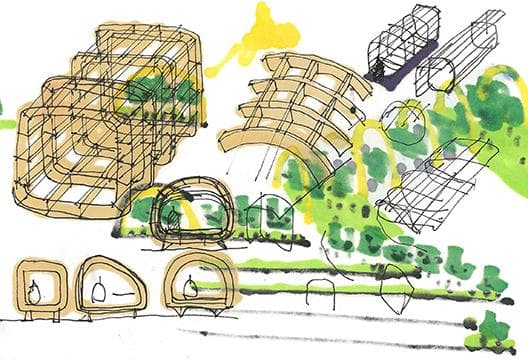
Doctor in the house
Pauline Meyer visits 'Living with Buildings', an exhibition at the Wellcome Collection in London.
08 October 2018
Living with Buildings, the Wellcome Collection's largest exhibition to date, explores the impact of the built environment on our mental and physical health.
The exhibition highlights what should be a simple truth: that buildings are ultimately built with humans in mind, and that they can (and arguably should) therefore be built to support and enhance health, wellbeing and community.
The ground floor of the exhibition charts developments in architecture and urban planning towards improving health and wellbeing, from the 19th Century to visions of postwar developments right up to the present day in which more people than ever live out their lives in metropolitan areas. The catastrophic scope of the psychological impact of the fire at the Grenfell Tower is explored and highlights that safe housing, which is of vital importance to mental and physical wellbeing, is still a huge issue in contemporary Britain. Here the exhibition particularly draws attention to inequalities in accessing a salubrious built environment.
Other exhibits include a commission by the artist Giles Round that explores colour psychology and its role in healthcare. This draws on sources such as a mid-20th-century guide which offered advice on the use of colour to influence mood and create healthy and productive environments in factories and hospitals.
Plans for 'Wellcome Ville' a utopian village envisaged for the workers at Henry Wellcome's pharmaceutical plant – plans which were never realised – are also displayed. Incidentally, it was the Wellcome Trust building at Euston Road, which hosts the present exhibition, that ultimately was built instead.
Architecture is shown to not only improve health and wellbeing, but also to enable the delivery of healthcare to those who are struggling with mental and physical health. The benefits of interdisciplinary working to addressing this discord are brought to life on the first floor of the gallery space, wherein a 'mobile' Global Clinic, which will be shipped off and used in the field to provide adaptable healthcare, is being built. Doctors of the World are tackling the huge mental health treatment gap (those who need care and those who can access it) in low and middle income countries by increasing their delivering of mental health support. The Global Clinic model enables this by incorporating democratic design that will create safe and confidential spaces to facilitate this work.
Ultimately the exhibition highlights the importance of psychology in seemingly unrelated fields. It will make anybody with a proximity to or interest in psychology think about the applications of our discipline.
The exhibition is accompanied by and inspired an eponymous new book by Iain Sinclair, published by Wellcome Collection and Profile Books, exploring some of the central themes from a psychogeographical approach.
- Reviewed by Pauline Meyer, a Recent Psychology Graduate of King's College London.
- The free exhibition runs until 3rd March 2019.
See also 'Is there a psychologist in the building?', and look out for our Q+A on 'how everyday spaces sructure our lives' in the November edition.
Image: Concept sketch for Doctors of the World project, 2018. Credit: Rogers StirkHarbour + Partners